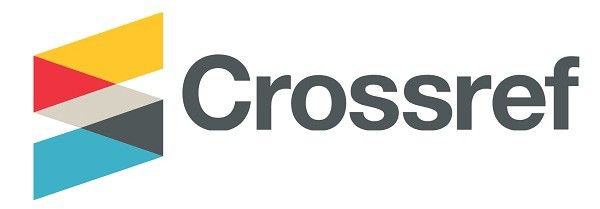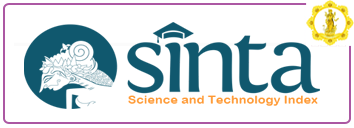NILAI PENDIDIKAN TOLERANSI DALAM MEME SEBAGAI MEDIA LITERASI AGAMA
DOI:
https://doi.org/10.25078/jpm.v9i01.2010Keywords:
meme, education, tolerance, literacy, religionAbstract
The Educational Value of Tolerance in Meme as a Media of Religious Literacy. This Currently, memes are being used as a means to voice social criticism, especially on issues that are being discussed by netizens on social media. This includes memes used as an interpretation of the meaning of religious tolerance in Indonesia. The formulation of the problem in this study is how is the portrait of religious tolerance education in memes on social media? The method used in this study is a qualitative research method with the use of semiotic studies. The elements of semiotics studied in this study are signs (images, shapes, shapes and colors), objects (meanings) and interpreters (attitudes and thought patterns of meme creators. The results of this study conclude that of the 5 memes studied, religious tolerance is in the form of creation). memes on social media are represented by the selection of characters with their respective characteristics, with different clothes as symbols or certain religious identities, differences in religious holidays that fall on the same day, different calls or greetings, are signs made by creators to give the meaning of religious tolerance education is in his meme. This viral meme which contains values of tolerance education is also effectively used as a medium or material in religious literacy.
Downloads
References
Arikunto. (2010). Suharsimi Arikunto.pdf. In Prosedur Penelitian Suatu Pendekatan Praktik-Revisi ke X.
Badan Pengembangan dan Perlindungan Bahasa. 2015. Kamus Besar Bahasa Indonesia Daring. Jakarta: Badan Pengembangan Bahasa.
Dian, Savitri Eka. 2018. Wacana Ekspresi Kritik Sosial Masyarakat Terhadap Sinetron Melalui Meme Internet. Prosiding SEMATEKSOS 3 "Strategi Pembangunan Nasional Menghadapi Revolusi Industri 4.0"
Dianita, Gita, dkk. 2018. Implementasi Pendidikan Toleransi di Sekolah: Sebuah Kearifan Lokal di Sekolah Nahdlatul Ulama. TARBAWY: Indonesian Journal of Islamic Education – Vol. 5 No. 2 (2018)
Hadisaputra, Prosmala. 2020. Pendidikan Toleransi di Indonesia: Studil iteratur. Jurnal Dialog Vol. 43, No.1, Jun 2020.
Indah, Yani Tri. 2020. Pendidikan Toleransi Beragama Berbasis Multikultural di SMA Nasional 3 Bahasa Putera Harapan (Pu Hua School) Purwokerto Kabupaten Banyumas (skripsi: tidak diterbitkan)
Judhita, Cristyani. 2015. Meme di Media Sosial: Analisis Semiotik Meme Haji Lulung. Jurnal Pekommas, Vol. 18 No. 2, Agustus 2015: 105 – 116
Listiyorini, Ari. 2017. Wacana Humor dalam Meme di Media Online sebagai Potret Kehidupan sebagian Masyarakat Indonesia. Jurnal LITERA, Volume 16, Nomor 1, April 2017.
Naufal. 2015. Fenomena Meme Comic dan Dampaknya bagi Psikologis Remaja.
https://naufalhf.wordpress.com/tag/remaja/ Diakses 24 Januari 2022
Penyusun, T. (2013). Moderasi Beragama. In Kementerian Agama (Vol. 53, Issue 9).
Suciartini, N. N. A. (2017). Analisis Wacana Kritis “Semua Karena Ahok” Program Mata Najwa Metro Tv. Aksara. https://doi.org/10.29255/aksara.v29i2.54.267-282
Suciartini, N. N. A. (2018). Pendidikan toleransi dalam pembelajaran bahasa indonesia berbasis metode think pair share di stikom bali. Ikip pgri bali. Jurnal Widyadari.
Suciartini, Ni Nyoman Ayu. 2019. Bahasa Satire Dalam Kultur Meme Media Sosial. Jurnal Pustaka Unud Vol 20 No.1 halaman 1—9. Denpasar: Universitas Udayana.
Suandi, I Nengah. 2010. Pengantar Metodologi Penelitian Bahasa. Singaraja: Undiksha.
Sugiyono. (2016). Metodologi Penelitian. Journal of Chemical Information and Modeling.
Akhmadi, A. (2019). Moderasi Beragama Dalam Keragaman Indonesia Religious Moderation in Indonesia ’ S Diversity. Jurnal Diklat Keagamaan, 13(2), 45–55.
Ayu Suciartini, N. N. (2020). Bahasa Satire dalam Meme Media Sosial. Pustaka : Jurnal Ilmu-Ilmu Budaya, 20(1), 1. https://doi.org/10.24843/pjiib.2020.v20.i01.p01
Savitri, E. D. (2018). Wacana Ekspresi Kritik Sosial Masyarakat Terhadap Sinetron Melalui Meme Internet. IPTEK Journal of Proceedings Series, 0(5), 13. https://doi.org/10.12962/j23546026.y2018i5.4416









